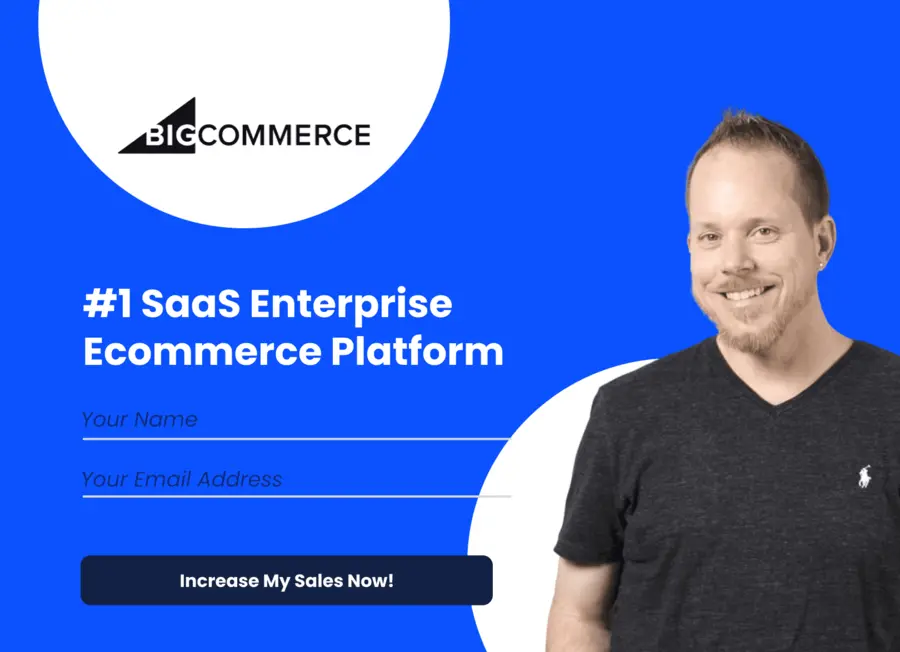Ecommerce continues to be a dynamic field, driven by innovation and consumer demand. Its revenue forecast will reach $7.9 trillion by 2027.
To take advantage of the rising market popularity, you should capitalize on the key trends redefining how ecommerce businesses operate and engage with customers.
Let’s explore the top ecommerce trends to adapt and thrive in online selling.
The Biggest Trends in Ecommerce to Follow
Here are the exciting trends transforming your ecommerce sales in the coming months:
1. Amazon Continues to Hold the Highest Market Share of All Ecommerce Companies
Amazon holds the top spot among all ecommerce sellers in the United States, capturing 37.6% of the market.
What does Amazon’s dominance mean for ecommerce businesses?
With its vast product range, competitive pricing, fast shipping, and superior customer service, Amazon sets a high standard that other businesses must strive to meet or exceed.
You should leverage its extensive customer base to sell your products on Amazon. Ensure you optimize your product listings for the Amazon search algorithm and consider using Fulfillment by Amazon (FBA) to take advantage of its logistics network.
Provide exceptional customer service. Ask buyers to leave a review on your Amazon product listing. Treat negative reviews as an opportunity to improve, satisfy users, and sell more. You can use our proven Amazon review management strategies to build trust and loyalty and increase ecommerce sales.
Leverage Amazon to diversify your sales channels and sell on your ecommerce sites, social commerce platforms (Instagram, TikTok Shop), and other marketplaces (eBay, Walmart). This strategy reduces dependency on a single platform and increases your overall market reach.
2. Personalization is the Key to Customer Loyalty in Ecommerce
While quality content helps you rise above your competition, personalizing your customer experiences helps boost retention, making it an essential ecommerce trend.
Tailor your customer experience with personalized product recommendations and dynamic content to skyrocket your sales. Use customer data such as past purchases or preferences, to offer personalized shopping experiences and show how well you understand them.
Many top ecommerce companies like Amazon, Walmart, and Apple use this ecommerce trend to their advantage. They show recommendations for similar products or items you viewed during your previous visit, helping you make faster purchasing decisions.
![12 Ecommerce Trends You Should Follow in [year] 2 walmart similar product recommendations](https://shanebarker.com/wp-content/uploads/2024/06/walmart-similar-product-recommendations.jpg)
3. Free Shipping and Easy Checkouts Guarantee Fewer Cart Abandonments
48% of U.S. consumers abandon their orders due to high extra costs like shipping, taxes, and fees. This data means you can boost sales by offering free shipping to your ecommerce customers.
Other significant reasons for ecommerce cart abandonment include:
- Asking shoppers to create an account to complete their order
- Too slow shipping
- Too long or complicated checkout process
- Limited payment options
What does this mean for your ecommerce strategy?
Free shipping and a quick checkout process appeal to customers, helping you gain more visibility.
Consider incorporating the shipping cost into the product price. Offer free shipping for orders above a certain amount to encourage higher spending.
Simplify your checkout process by reducing the number of steps involved.
Permit consumers to purchase quickly without creating an account. Use auto-fill features for customer information. Provide incentives (like discounts or loyalty points) for customers who create an account.
To further improve conversion rate, offer multiple payment options, including credit/debit cards, PayPal, Apple Pay, and Amazon Pay.
4. Generative AI and Big Data Offer Multiple Growth Opportunities
One trend that continues to grow is the rise of artificial intelligence (AI) and big data for next-level personalization and ecommerce sales.
Providing personalized shopping experiences helps ecommerce businesses boost their sales, average order value (AOV), repeat purchases, and loyalty.
65% of consumers expect you to understand what they need and prefer. Leveraging AI and machine learning can help you make wise, more accurate predictions and recommendations to satisfy your customers.
You may use retargeting tactics where you display social media ads or send product recommendation emails for products that your customers seem interested in.
However, if you continue to offer the same recommendations even after the customer has already purchased the product or a similar product, it will be irrelevant to them. So, it’s crucial to use customer data to avoid such situations.
You can even use the technology to provide your shoppers with a personal shopping guide.
For instance, Unisport has introduced The Ultimate Boot Selector, which helps shoppers find the perfect pair of boots for themselves by answering a few questions. This action guides shoppers into making quicker purchasing decisions, growing your conversion rate.
![12 Ecommerce Trends You Should Follow in [year] 4 personalized boot shopping guide by unisport](https://shanebarker.com/wp-content/uploads/2024/06/personalized-boot-shopping-guide-by-unisport.png)
Based on the consumer’s answers, Unisports AI technology picks the top three boots options that fit.
![12 Ecommerce Trends You Should Follow in [year] 5 unisport boots recommendations](https://shanebarker.com/wp-content/uploads/2024/06/unisport-boots-recommendations.jpg)
5. Subscription-Based Models Help Retain Customers
Many ecommerce businesses are changing their offers from regular products and product bundles to monthly subscriptions. This strategy helps boost customer retention and your ecommerce sales and revenue.
The famous razor company Dollar Shave Club made it big by offering monthly subscriptions of blades for your shaving needs.
![12 Ecommerce Trends You Should Follow in [year] 6 offer monthly subscriptions to increase ecommerce sales](https://shanebarker.com/wp-content/uploads/2024/06/offer-monthly-subscriptions-to-increase-ecommerce-sales.png)
6. Interactive Chatbots Are Taking Customer Support to the Next Level
The key to ecommerce success is to provide exceptional online shopping experience and customer service. You must put your customers first and ensure they enjoy hassle-free shopping and post-sales support experience.
The best way to provide top-notch customer support is by using AI-powered chatbots for live chat.
Previously, chatbot conversations felt robotic, but the evolving generative AI has made conversations more user-friendly.
You should use these smart tools to handle user inquiries instantly, help your customers find the perfect products, and simplify transactions. These assistants mimic human conversation, offering efficiency and a personal touch that keeps your customers happy and engaged.
Use popular chatbot builders like Botsify or AI-powered ticketing solutions like Freshdesk for your ecommerce customer service.
![12 Ecommerce Trends You Should Follow in [year] 7 Botsify chatbot review for ecommerce](https://shanebarker.com/wp-content/uploads/2024/06/botsify-chatbot-review-for-ecommerce-.png)
7. Shopping is Going Mobile Mostly
Most people carry their smartphones everywhere, boosting mobile shopping. The U.S. mobile commerce accounts for $534 billion in sales in 2024.
91% of shoppers make online purchases using their smartphones, which calls for delivering better mobile experiences.
Make the most of this ecommerce trend. Ensure your mobile web pages load quickly and correctly. Your mobile ecommerce site or app should have easy navigation and browsing.
You can test your site’s mobile friendliness with Google’s PageSpeed Insights tool and diagnose issues.
![12 Ecommerce Trends You Should Follow in [year] 8 amazon site mobile performance test](https://shanebarker.com/wp-content/uploads/2024/06/amazon-site-mobile-performance-test.png)
It also gives you improvement insights to help you provide better mobile shopping experiences to your ecommerce customers.
![12 Ecommerce Trends You Should Follow in [year] 9 Amazon mobile website issues and fixes](https://shanebarker.com/wp-content/uploads/2024/06/amazon-mobile-website-issues-and-fixes.png)
8. GenZs and Millennials Shop on Social Media Platforms the Most
Instagram, Facebook, and TikTok are more than just social media platforms. They have led to the rise of social commerce, making it a $1.3 trillion market. Experts predict this trend will grow to a $8.5 trillion market by 2030.
![12 Ecommerce Trends You Should Follow in [year] 10 social commerce market size](https://shanebarker.com/wp-content/uploads/2024/06/social-commerce-market-size.png)
Social media platforms offer one-click checkouts and live shopping options, increasing customer friendliness. Users can purchase products directly from influencer ads and other content creators’ posts.
With shoppable Instagram posts and Pins, you can tag your products in your posts and Stories and let customers place their orders without leaving their favorite social media apps. You can use social channels to build brand awareness, engage customers, and sell products, all within the same interface.
For example, H&M, the leading global fashion retailer, has turned its Instagram profile into a shoppable content storefront. They tag products in their IG posts so their 38M followers can discover products and purchase directly from the app.
Shoppable videos are an effective strategy for boosting your ecommerce sales. With a few clicks, video viewers can buy the product they see in a YouTube video or Instagram Reels.
This video from IKEA is a great example:
To capitalize on the growing social commerce trend, don’t miss optimizing your content on the top social channels for social buying. Here are the top ones:
9. Sustainability is at the Top of Shoppers’ Minds
Consumers prefer brands that care about the environment. About 80% of consumers said they would pay up to 5% more for sustainable goods. About 33% are willing to pay up to 10% more.
Here are a few tips to hop on this ecommerce trend of rising sustainability consciousness among buyers:
- Launch and offer sustainable, eco-friendly product lines.
- Reduce waste through green packaging solutions. You can go paperless, use biodegradable packaging, and use recyclables.
- Provide information on your sourcing and manufacturing processes to build consumers’ trust in your brand.
For example, the skincare brand Tropic aims to help create a healthier, greener, more empowered world. They sustainably source nutritious ingredients and offer COSMOS certified organic skincare products free of toxic chemicals or artificial preservatives.
Tropic encourages customers to return their empty packaging for recycling. They also offer discount vouchers against the same.
Similarly, the famous fashion brand, H&M uses bicycle couriers to reduce their carbon footprint.
10. User-Generated Content (UGC) is Influencing Purchasing Decisions
User-generated content, such as reviews, is an excellent way to win the trust of ecommerce consumers. You’ve probably included customer reviews on your product pages to drive more conversions.
You can go one step further by repurposing user-generated photos and videos for your marketing campaigns. These materials appeal to consumers, seeing how your products make others’ lives easier or better.
You can use UGC on your product pages, social media feeds, and shoppable social posts.
For example, Daniel Wellington has a community-inspired product gallery on their ecommerce site. You can shop DW watches and accessories other customers love.
![12 Ecommerce Trends You Should Follow in [year] 15 daniel wellington ugc for ecommerce example](https://shanebarker.com/wp-content/uploads/2024/06/daniel-wellington-ugc-for-ecommerce-example.jpg)
However, the first step is to collect UGC. You can do this by encouraging customers to share the products they bought on social media and tag your brand on their posts. You can ask them to use a specific branded hashtag for these posts.
The branded hashtag, “#danielwellington,” has over two million posts on Instagram. That’s a wealth of user-submitted content.
![12 Ecommerce Trends You Should Follow in [year] 16 ecommerce branded hashtag UGC content](https://shanebarker.com/wp-content/uploads/2024/06/ecommerce-branded-hashtag-ugc-content.jpg)
Then, you can collect those photos and repurpose them for your social feed and product pages.
User-generated content brings a fresh, real-world perspective to your product photos and descriptions. Imagine seeing how a piece of your clothing looks styled in various ways or fits different body types — it’s way more relatable than models with toned bodies wearing the outfits.
UGC videos take it even further, showcasing the ins and outs of more complicated products, like gadgets or cars, in a way that professional shoots can’t match.
Plus, UGC is a budget-friendly content goldmine for social commerce. You can curate and share genuine, real-time posts from authentic users and use hashtag campaigns.
Aside from that, you can also collaborate with nano- and micro-influencers. Ask them to test your products and share their authentic reviews on social media.
Influencer marketing platforms like Heepsy let you find influencers relevant to your niche and with high user engagement.
11. Augmented Reality (AR) and Virtual Reality (VR) Are Improving Customer Satisfaction and Sales
The adoption of AR and VR technologies in ecommerce is increasingly reshaping consumer shopping habits globally. Ecommerce products promoted using AR/VR technologies have 94% higher conversion rates than those without.
The best example is the IKEA Place app, which lets consumers visualize how a piece of furniture would look in their apartment or home before purchasing it.
Implement AR and VR technologies to enhance online shopping experiences with virtual try-ons, 3D product views, and virtual stores. It can help improve customer satisfaction and sales.
12. Voice and Visual Searches Are Driving Ecommerce Sales
Voice and visual-activated shopping is becoming more prevalent with the rise of smart speakers and “circle-to-search” mobile features. These technologies are enhancing the shopping experience and driving significant sales.
Voice search technology, powered by virtual assistants like Amazon's Alexa, Google Assistant, and Apple's Siri, makes shopping more convenient and accessible. These home assistants allow consumers to do hands-free shopping.
Visual search technology enables customers to search for products using images instead of text, transforming how people find and purchase items online. Consumers can look for products from their friends’ photos or travel galleries.
What does this mean for ecommerce businesses?
You need to optimize your product listings for voice searches and smart speakers by incorporating natural language keywords and phrases that people commonly use when speaking.
Simplify the purchase process – allow consumers to quickly pull up products, check prices, and complete purchases using voice commands.
Implement visual search capabilities on your ecommerce site and ensure your product images are high-quality and well-optimized to be easily recognizable by visual search algorithms.
Multiple search options can enhance the user experience, making it easier for customers to find exactly what they need. This tactic can lead to higher conversion rates and sales.
Stay on Top of the Ecommerce Trends
In the fast-paced world of ecommerce, staying ahead of trends is crucial for growth and success. Boost your ecommerce sales and revenue by keeping up with the latest innovations and meeting customer expectations.
Never miss a beat — stay informed, adapt quickly, and watch your ecommerce business thrive.
Keep selling online!

![12 Ecommerce Trends You Should Follow in [year] 1 Amazon's ecommerce market share stats](https://shanebarker.com/wp-content/uploads/2024/06/amazons-ecommerce-market-share-stats.png)
![12 Ecommerce Trends You Should Follow in [year] 3 product recommendations](https://shanebarker.com/wp-content/uploads/2024/06/product-recommendations.png)
![12 Ecommerce Trends You Should Follow in [year] 11 H&M ecommerce shoppable Instagram post example](https://shanebarker.com/wp-content/uploads/2024/06/h-and-m-ecommerce-shoppable-instagram-post-example.jpg)
![12 Ecommerce Trends You Should Follow in [year] 12 top social commerce platforms](https://shanebarker.com/wp-content/uploads/2024/06/top-social-commerce-platforms.png)
![12 Ecommerce Trends You Should Follow in [year] 13 rise of sustainable ecommerce trend](https://shanebarker.com/wp-content/uploads/2024/06/rise-of-sustainable-ecommerce-trend.png)
![12 Ecommerce Trends You Should Follow in [year] 14 sustainable ecommerce brand example](https://shanebarker.com/wp-content/uploads/2024/06/sustainable-ecommerce-brand-example.jpg)
![12 Ecommerce Trends You Should Follow in [year] 17 influencer ad for an ecommerce store](https://shanebarker.com/wp-content/uploads/2024/06/influencer-ad-for-an-ecommerce-store.jpg)
![12 Ecommerce Trends You Should Follow in [year] 18 ar vr use in ecommerce by ikea](https://shanebarker.com/wp-content/uploads/2024/06/ar-vr-use-in-ecommerce-by-ikea.jpg)


Related Articles
11 Best Ecommerce Platforms to Set Up an Online Store
Top B2B Ecommerce Platforms for 2025
How to Build an Ecommerce Website in 9 Easy Steps
11 Best Ecommerce Platforms for Small Businesses in 2025
The World’s Top Ecommerce Companies (2025 List)
25 Best Ecommerce Tools to Grow Your Business in 2025